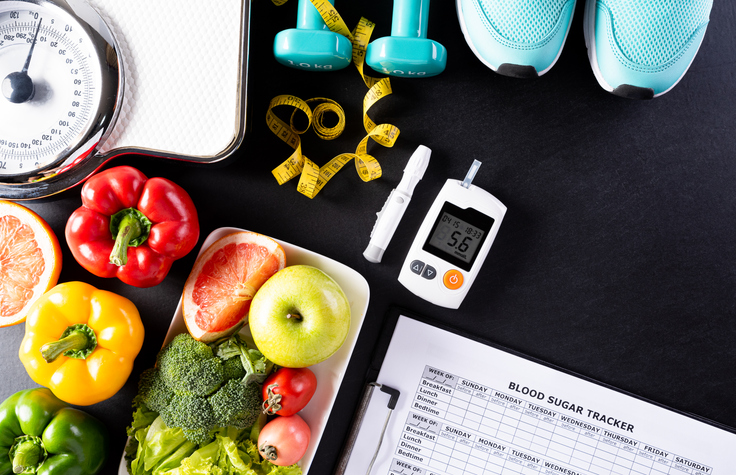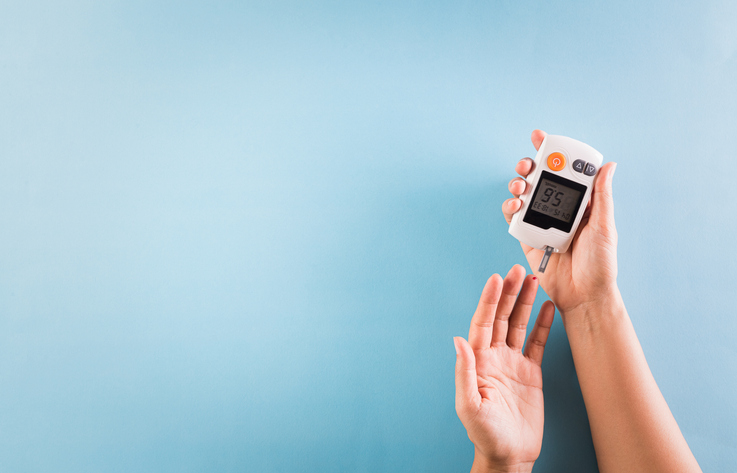In the United States, diabetes is increasing at an alarming rate. According to the CDC’s National Diabetes Statistics Report for 2020, diabetes cases have raised to 34.2 million people – meaning 10.5% of the US population has diabetes. In 2018 alone, about 1.5 million new cases of diabetes were recorded among adults.
When diabetes isn’t controlled, it can cause complications that affect many parts of the body, such as kidney disease, amputation, blindness, stroke, neuropathy, high blood pressure, stroke, and heart disease.
By having a balanced diet and regular exercise, people with diabetes can improve their health. For those who don’t have the disease, these two things can help delay or prevent its onset at old age.
And speaking of having a balanced, healthy diet, the best way to achieve it is to cook more of your foods at home. Eating out or eating processed and packaged foods have been the leading cause of diabetes.
You can learn more about Type II Diabetes here – Understanding Type 2 Diabetes: Prevention & Management.
How to Cook Food for Diabetes Diet?
Here are some cooking and food preparation tips to keep your blood sugar under control.
1. Swap in veggies for starches.
If you love pasta, fried rice, and other starchy dishes, it’s time to make some adjustments if you want to avoid having diabetes in the future. Swap these out for spaghetti squash, zucchini noodles, and cauliflower rice. There are a lot of veggie-centric alternatives to your usual starchy favorites. They might need a little bit of getting used to at first, but you will love them as much as you love the high-carb options as you push through.
2. Add more non-starchy veggies to your diet.
If you think that substituting starch with vegetables will leave your tummy rumbling, you’re wrong. You can build meals and eat snacks made of non-starchy vegetables like leafy greens, cucumbers, radishes, bell peppers, and green beans. These are nutrient-dense foods that can be filled without adding too many calories.
3. Add flavor using herbs and spices.
Despite what you might think, diabetes-friendly foods don’t always have to be bland and tasteless. Our love for food is due to its flavor, and you still can make your healthy dishes flavorful. Instead of focusing on how much sugar and salt you’re cutting out, focus on adding more flavor without using these two diabetes-causing condiments. Try adding fresh herbs, garlic, ginger, onions, lemon, lime, or spice things up with cayenne or jalapeno pepper.

4. Cook foods strategically.
As much as possible, avoid frying your foods to prevent health complications. For people with diabetes, steaming, baking, grilling, and roasting are the best ways to cook your food as these methods help enhance the flavor of food without adding too much saturated fat.
5. Prepare your meals ahead.
Plan what you will eat throughout the week in advance so that you can always be ready to cook and prepare healthy meals. When you have diabetes, it’s important to map out your food, especially the number of carbs you will be eating, so your medications and insulin can work at an optimal level. Get a list of diabetes-healthy foods and whip up some veggie-based, protein-based diets. Monounsaturated fats, which can be found in almonds, olive oil, cashews, peanut butter, avocado, and more, can lower your cholesterol levels.
6. Stock your freezer.
If you have nothing to cook in the freezer, you will end up getting take-out and deliveries from fast food and restaurants. One way to avoid this from happening is to stock healthy meals in the freezer. Stock up on meat so you can always have something to cook. Put them in a microwavable container to make reheating easier.
7. Eat more protein.
Protein can help stabilize blood sugar and keep your stomach feeling full for longer. It is important to add lean protein to every meal, especially for those pre-diabetes and diabetes patients. Some high protein sources include nuts, hummus, beans, turkey, chicken, wild salmon, flank steak, pork tenderloin, and Albacore tuna. These meats are less likely to raise blood sugar levels.

8. Be mindful of your food portions.
Constant overeating will lead to weight gain and a large waistline, which is a risk factor for diabetes. Check if you need to lessen the portions of the food you eat and cook. Ensuring that you have the standard 9-inch plate (or smaller) will make it easier for you to eat just right at home. Shedding some excess pounds can help control diabetes. When eating out (hopefully just occasionally), measure out your portions and see what it looks like on a plate at home. You might be surprised at how much you tend to eat when you’re in the outside world.
9. Keep healthy snacks at hand.
When you have diabetes, you have to be extra careful about snacking. Most of us think we are just consuming small portions of one unhealthy snack one time, but before we know it, we’re hooked, and we try to buy and eat it again and again. To prevent yourself from eating unhealthy snacks, stop wandering about in the chips and chocolate section of the grocery store so you won’t end up buying unhealthy snacks. Replace them with nuts like almonds, peanuts, and walnuts, and mix them up with fresh fruits. Keep healthy snacks in your pantry, so whenever you feel like snacking, those remain your only choices.
10. Be familiar with sugar’s many names.
We all know that we need to avoid sweets and sugary stuff to prevent diabetes. And when you already have the disease, sugar is a no-no. But when you shop, you might be fooled by more than 56 names for added sugar, so be familiar with them. Some “hidden sugars” are in the form of sucrose, high fructose corn syrup, molasses, agave, brown rice syrup, dried cane syrup, maple syrup, and more. As a rule of thumb, avoid foods with anything ending in “syrup” or “ose.”
Conclusion
We can conclude that fighting against diabetes is not a big problem. With certain changes to your diet and cooking patterns, one can easily control Type II Diabetes. We recommend that you purchase the book that we have recommended above. It has helped out many people in beating diabetes without any major problems.

